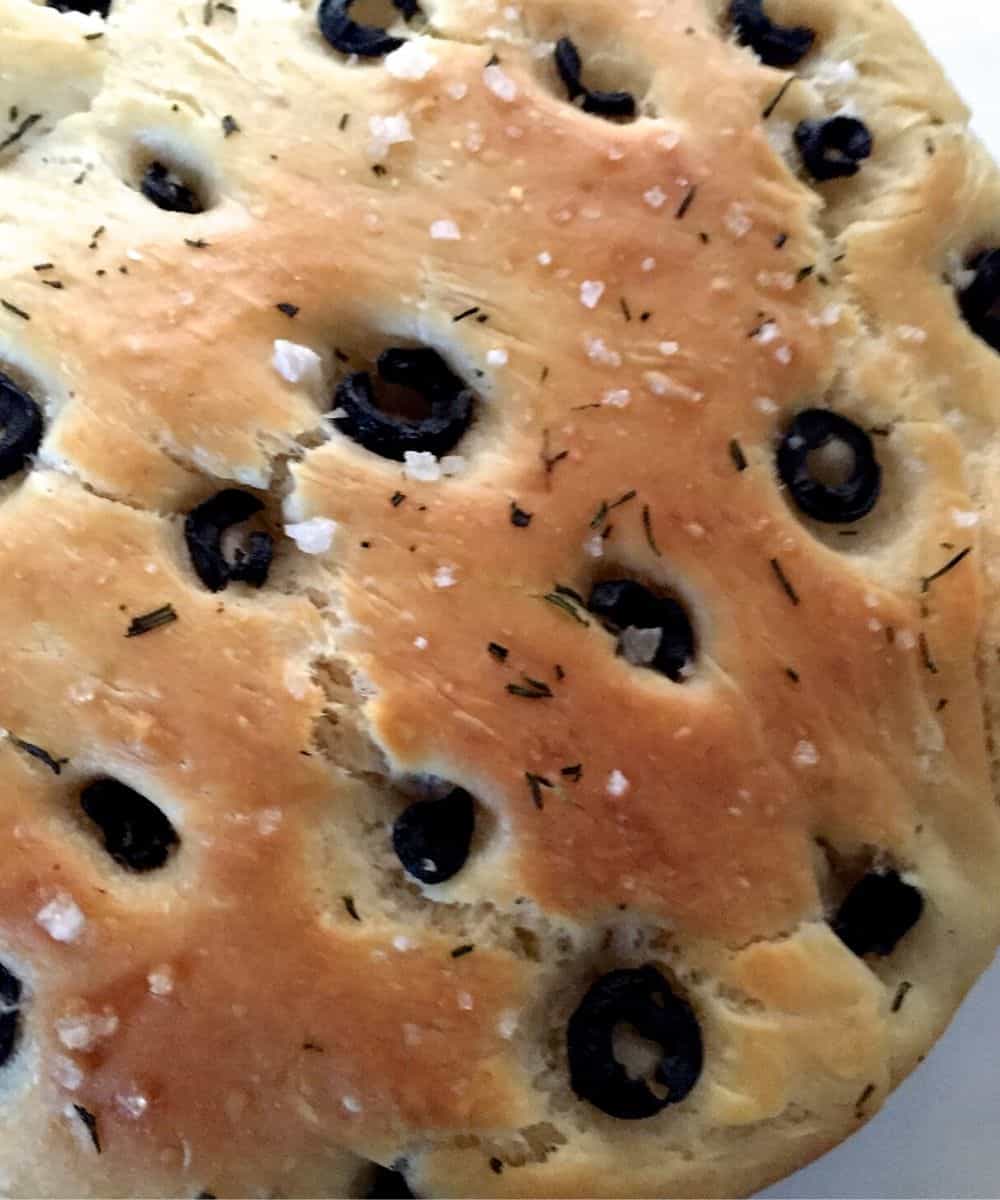
Wikipedia says, "In Ancient Rome, panis focacius was a flat bread baked on the hearth. The word is derived from the Latin focus meaning "hearth', a place for baking. The basic recipe is thought by some to have originated with the Etruscans or ancient Greeks, but today it is widely associated with Ligurian cuisine. " Well, I would like to thank the Etruscans or ancient Greeks or Ligurians, or whichever of the ancients introduced this amazing bread to the world. Just make and taste this Olive Rosemary Focaccia Bread, and you will see what I mean!
In his introduction to The Complete Italian Vegetarian Cookbook (from which this recipe is adapted), Chef Jack Bishop says,'Pasta and pizza may be Italy's most eye-catching exports, but it is the country's varied and sensible use of vegetables that provides the best inspiration for American cooks.'
I am an Indian homecook however it is the use of herbs and vegetables in multivarious forms in Italian cookery, which makes me go back to these recipes again and again.
I have enjoyed making this olive rosemary focaccia, and of course eating it too, with pasta or with soup. When I first made this focaccia, I was lucky to be able to pick fresh rosemary from my daughters herb garden, for the topping. Now that I have a pot of rosemary growing in my balcony, this bread is becoming a frequent item in my kitchen.
The aroma of the rosemary wafting through the kitchen is sufficient reward for all efforts in making the olive rosemary focaccia! Add to this the fact that it is quite easy to make if you follow the measurements properly, and you get brownie points from the family for giving them this treat.
For the best focaccia, use a good quality olive oil and some coarse salt, to bring out the flavours of the freshly baked bread.
Variation from Olive Rosemary Focaccia:
Other fresh herbs may be substituted for the rosemary - sage makes for a flavourful focaccia. Sun dried tomatoes and basil (fresh or dried) may be substituted for the olives and rosemary.
Link to my recipe on this blog for Home made Basil Oil: Fragrant Home made Basil Oil
Till recently, good quality yeast was not easily available in India. Now there are some premium qualities available in Stores that supply ingredients and equipment for Baking, such as Arife, in various cities, and online on Amazon.
"Recipe"
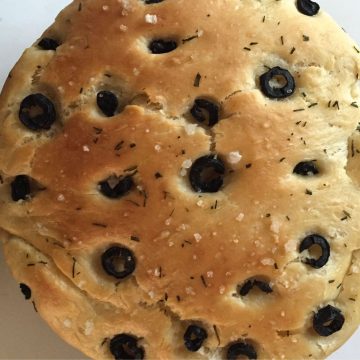
Olive Rosemary Focaccia
Ingredients
For the Dough:
- 1.5 cups water Warm
- 2 tsps Active dry yeast
- 3 tbsps extra virgin olive oil
- 3.5 cups all purpose flour (maida)
- 2 tsps salt
- vegetable oil spray to grease the bottom of the baking sheet
For the topping:
- 2 tbsps extra virgin olive oil
- 1 teaspoon salt Kosher (or coarse)
- Sprigs rosemary Fresh
- 5 Black olives sliced into rings
Instructions
- Proof the yeast: Stir in a little sugar in hot (not boiling) water and add the yeast. In about 5 to 10 minutes, the yeast would become active, forming a light foam on the surface of the water. The yeast is 'alive' and may now be used in the recipe.
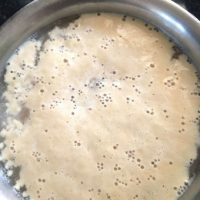
- To make the dough in a food processor:
- Pour warm water into the work-bowl of the processor. The temperature of the water should be about 37-40 Celsius (about 100 degrees F.)
- Add yeast and oil and run the processor for a few seconds until the mixture is smooth.
- Add flour and salt and run the processor for 30 secs or till the dough rolls up into a ball.
- Scatter rosemary leaves across the dough, reserving about half the rosemary in the ingredients list, for topping the focaccia before baking. Follow the instructions below for Setting the Dough to Rise.
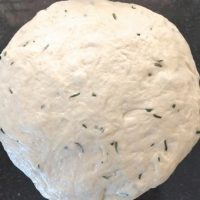
- To mix the dough by hand:
- In a large bowl, combine the hot water (about 100 deg F or 37-40 deg C), yeast and oil and stir them together using a wooden bowl.
- Sieve in the flour along with the salt, and stir it into the oil water and yeast mixture.
- Using your (clean!) hands, mix the dough and then knead on a flat clean work surface for about 5-6 minutes.
- Scatter rosemary leaves across the dough, reserving about half the rosemary in the ingredients list, for topping the focaccia before baking.
- Roll the dough into a ball. Follow the instructions below for Setting the Dough to Rise
- Setting the Dough to Rise:
- Turn the dough onto a lightly oiled large bowl and cover it with a clean damp cloth. I use a large glass bowl for this.
- Let the dough rise, for about 1.5 hours, until it becomes puffy and doubles in bulk.
- Take a baking sheet with sides of at least 1" depth or else a pan of 15" x 10". Spray oil generously on the bottom and sides of the sheet/ pan or cover the bottom and sides with parchment paper.
- Flatten the dough and press it into the pan. Cover with a clean damp cloth and let it rise until puffy, and doubles in bulk ( 1.5 - 2 hours)
- Preheat the oven to 220 deg Celsius (425F)
- When the dough is ready to bake, dimple the surface with your fingers at about 2" intervals. Make deep indentations as the dough will quickly spring back to the surface.
- Lightly press olive rings in the indentations and press small sprigs of about 1" in length or individual Rosemary leaves on the surface of the dough.
- Sprinkle 2 tbsps of oil on the surface, including into the indentations.
- Sprinkle ½ -1 tsps of coarse salt on the surface and into the indentations.
- Bake for 20 -25 minutes until the bottom of the focaccia gets richly coloured and crisp, and the top is golden brown. As oven temperatures tend to differ, check the bread 15 minutes after baking to make sure you do not overbake it.
- Remove from the oven, and using a spatula, slip the focaccia to a wire rack to cool.
- The bread is best served warm, with soup or pasta. Also delicious when served warm with Basil Oil or a Pesto.
- Links to my Recipes on this Blog for Home made Basil oil and Basil pesto, are given above the Recipe.
RECOMMENDED PRODUCTS
As an Amazon Associate and member of other affiliate programs, I earn from qualifying purchases.


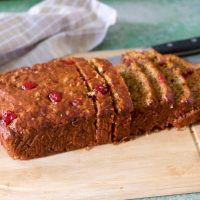

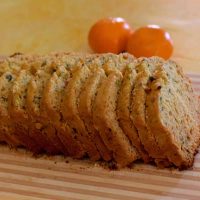
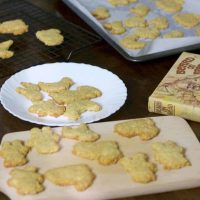
Comments
No Comments